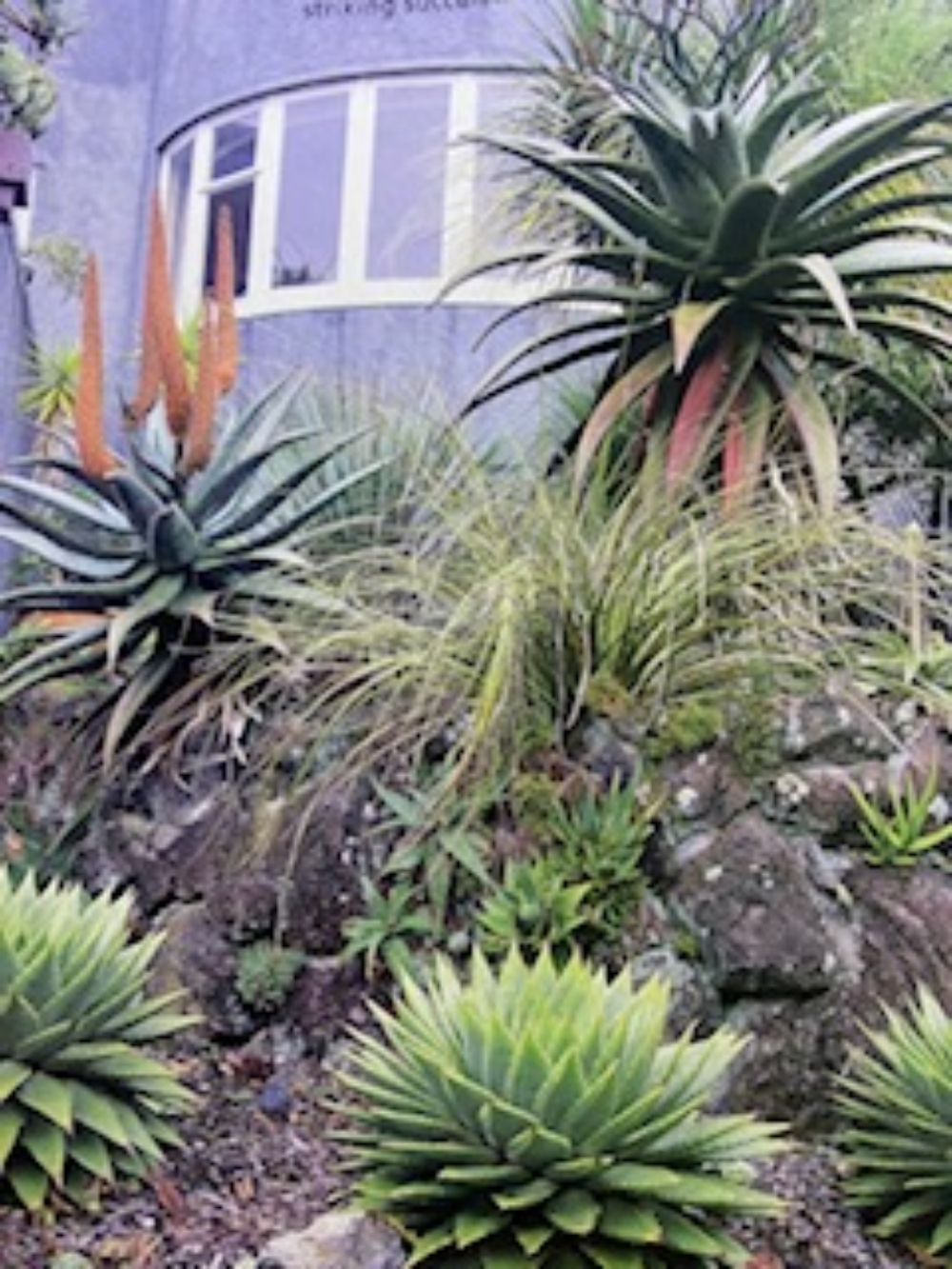
Photo shows a flowering local agave plant.
AS undemanding as the succulents are in floral landscape, there are alternatives in terms of care and preserving tolerance to environmental mistreatments. Being both hardy and drought-resistant, succulents can live very long provided that they are not subject to waterlogging.
Amongst the familiar ones are the sempervivum and the agave – the word ‘sempervivum’, in Latin, translates to ‘always alive’. The hardiness makes them easy to be grown as garden plants.
They are most sought after for their special ‘rosettes’ and the spiral-patterned foliage that can come in many colours.
Each rosette is a single, independent individual. As a monocarpic plant, it blooms once and after that, dies. However, the clump of offsets from the dying rosette will emerge into a new one; hence, the never-ending flowering.
Keeping a sempervivum is best-suited to those who always forget to water plants regularly.
It is good for those who would leave home for the holidays, or on outstation duties often. Succulents really do not care if you left them for a week or two, even under our climate.
They can be grown in containers, on drift woods and bricks, or rocks. They are suitable for gravel gardens and vertical planting, as long as they have a medium of compost, mixed with gravel or grit for drainage.
They do not need feeding once the slow-releasing fertiliser is incorporated in the compost.
They don’t need plant-sitters!

These succulents can be grown in containers, on drift woods and bricks, or rocks.
Agave
A close relative of the sempervivum is the agave, which can be grown together in the same environment. With a distinctive rosette emerging from the soft, sappy foliage with blue-green-tinted leaves, agave is an excellent survivor and can thrive in soils where other plants may perish.
The agave comes in various sizes and shapes – we have some grown one with its central spike shooting high up to the sky, and there are varieties that can grow to a height of three to five feet (between 1m and 1.5m).
It can reproduce numerous small plantlets that spread over the ground to generate new plants.
The most outstanding variety would be the ‘Spanish Shawl’ (Heterocentron elegans), while the most beautiful one would perhaps be the ‘Royal Agave’ (Agave victoriae-reginae – the last two words actually translate to ‘Queen Victoria!).
It forms a solid ball of mid-green leaves with bright white edges and markings.
Flowering is very irregular and what can trigger flowering is difficult to know – some can take up to 10 years before blooming.
Just like sempervivum, agave is also monocarpic.
These succulents are like camels in the desert, in that they do not need watering for weeks on end and ‘would be happy’ if they’re planted in well-drained medium added with slow-releasing fertiliser.
Agave and its uses
Agave can create an architectural impact in feature gardening and landscape design, augmented by its low-maintenance and low water usage – perfect for sustainable gardens.
It can be planted in places not suitable for other plants, and it can also be grown in pots and planter boxes.
Some species of agave are harvested to produce biofuel, tequila and perhaps, the trendiest and most known usage is to make the natural sweetener, the agave syrup.
Being virtually self-maintaining, agave seems to be the best for any low-maintenance garden. A fully sunny location is ideal, but it can also tolerate some shade.
It can be grown in very hot and dry regions, where other plants cannot survive.
Avoid wet soil and areas with poor drainage, which may kill the plant. It is better to avoid heavy clay, but a sandy medium is OK.
In pots, it can survive well with succulent or cacti-blend soil. It has very brittle leaves and can be placed away from narrow pathways, or from areas where children frequent to as the sharp end of the leaves can prick and cause cuts.
Trim off dead or damaged leaves die – for me, I would cut off the black sharp tips of the leaves and also remove the dying leaves below to make it look healthy.
For the record, I also have the white-leaf variety that looks very striking from a distance.
New plantings can start from the pup that develops after flowering, or take the shoots from the large clump for planting in pots or the ground.
Happy Gardening!
